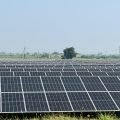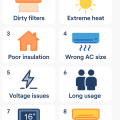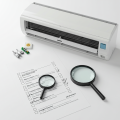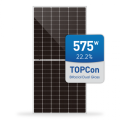Last updated on May 26th, 2025 at 03:12 pm
Ceiling fans are one of the most common household appliances after lighting. During summer, their power consumption contributes significantly to household energy use, particularly for middle and lower-middle-class families. Therefore, fan power consumption should not be overlooked in energy planning initiatives.
The Bureau of Energy Efficiency (BEE) is a government agency under the Ministry of Power. It has taken an important step by introducing a star rating system for ceiling fans. Fans now come with a star rating system. It is similar to the familiar labels we see on refrigerators and air conditioners. The rating ranges from one star (least efficient) to five stars (most efficient). A higher star rating means the fan uses less electricity for the same cooling. This helps you cut down your monthly electricity bills without compromising on comfort. The star label is simple to understand. It shows key details like power consumption and airflow efficiency. This makes it easy for anyone to choose the right fan.
A sample energy label for fans is shown below:

For rating minimum performance value must be qualified based on their blade span. Further rating has also been segregated based on blade span.
Fan Rating based on length of wings is shown as below –
It is recommended that people use higher rating fans to conserve energy. When comparing energy requirements, 5 Star fans are 40 to 64% energy efficient. This efficiency varies in different categories of fan length.
But the story doesn’t stop at star ratings. Behind the scenes, technology has also been stepping up. Traditional fans mostly use induction motors, which, while reliable, are not the most energy-efficient. Enter BLDC (Brushless Direct Current) motor technology — a true game-changer for fans. BLDC fans use smart electronics to control the motor, cutting down on energy losses that occur in old designs.
A BLDC (Brushless Direct Current) motor is an advanced type of electric motor. It operates without brushes. Electronic controllers manage the flow of current to the motor coils. Unlike traditional brushed motors, BLDC motors are more efficient, durable, and quieter because they eliminate friction and wear from brushes. In ceiling fans, BLDC motors significantly reduce power consumption. They often use 50–65% less energy than conventional motors. They deliver the same or better performance. They also offer smoother operation, longer lifespan, and smart features like remote control, making them ideal for energy-efficient applications.
Choosing an energy-efficient fan isn’t just about saving money. It’s about making a small but powerful choice for the planet. If millions of households made the switch, India could save thousands of megawatts of electricity every year. This requires using five-star rated or BLDC fans. This change would lead to fewer power cuts. It would also lower carbon emissions and bring us a step closer to a cleaner, greener future.
In short, the next time you’re buying a fan, look for the BEE star label. You should also consider going for a BLDC fan. It’s an investment that pays you back — in lower bills, better performance, and a healthier environment.
A small change at home can lead to a big change for the country. Choose wisely. Save energy. Save money. Save the planet.
For HVLS fans with BLDC motor, click here
For best energy efficient fan available in Indian market, click here














It is really a nice and helpful piece of info. I?¦m satisfied that you shared this helpful info with us. Please stay us informed like this. Thank you for sharing.
so much superb info on here, : D.
It¦s really a great and useful piece of information. I am satisfied that you shared this useful info with us. Please keep us informed like this. Thanks for sharing.